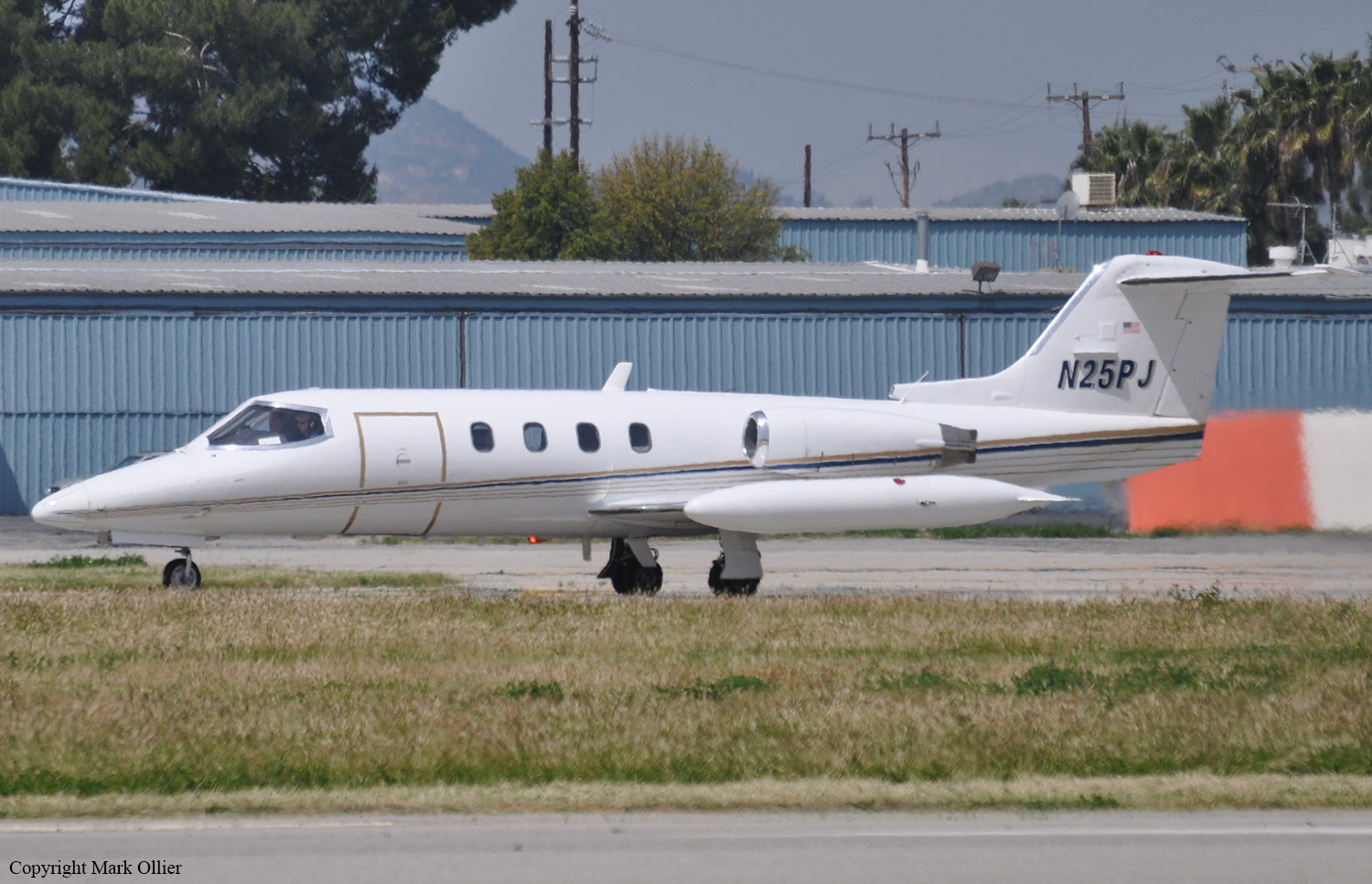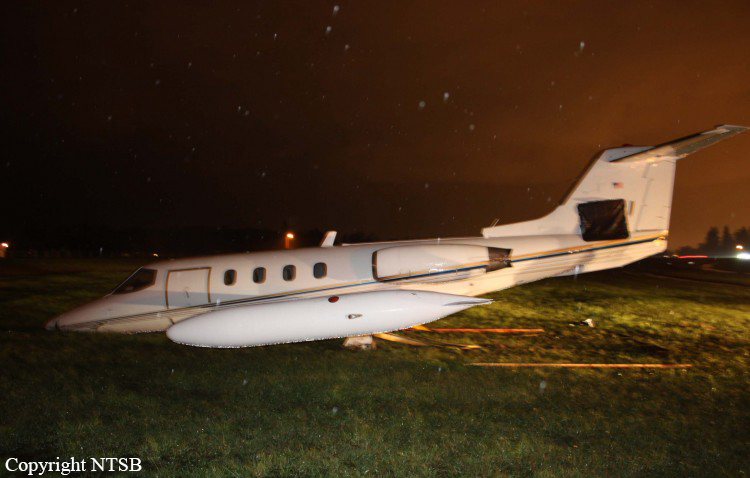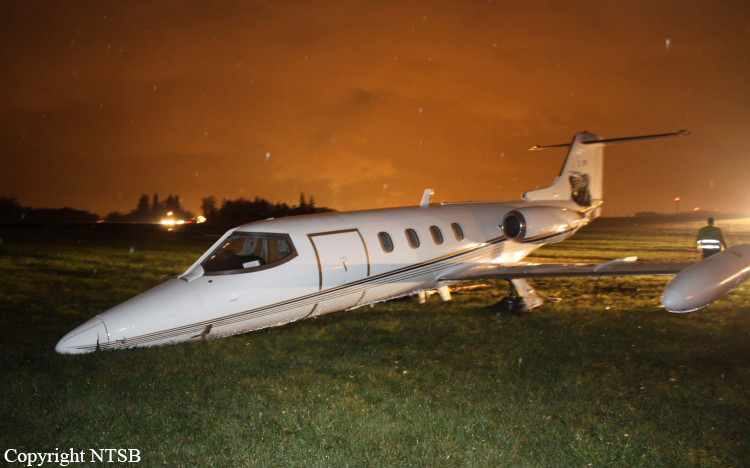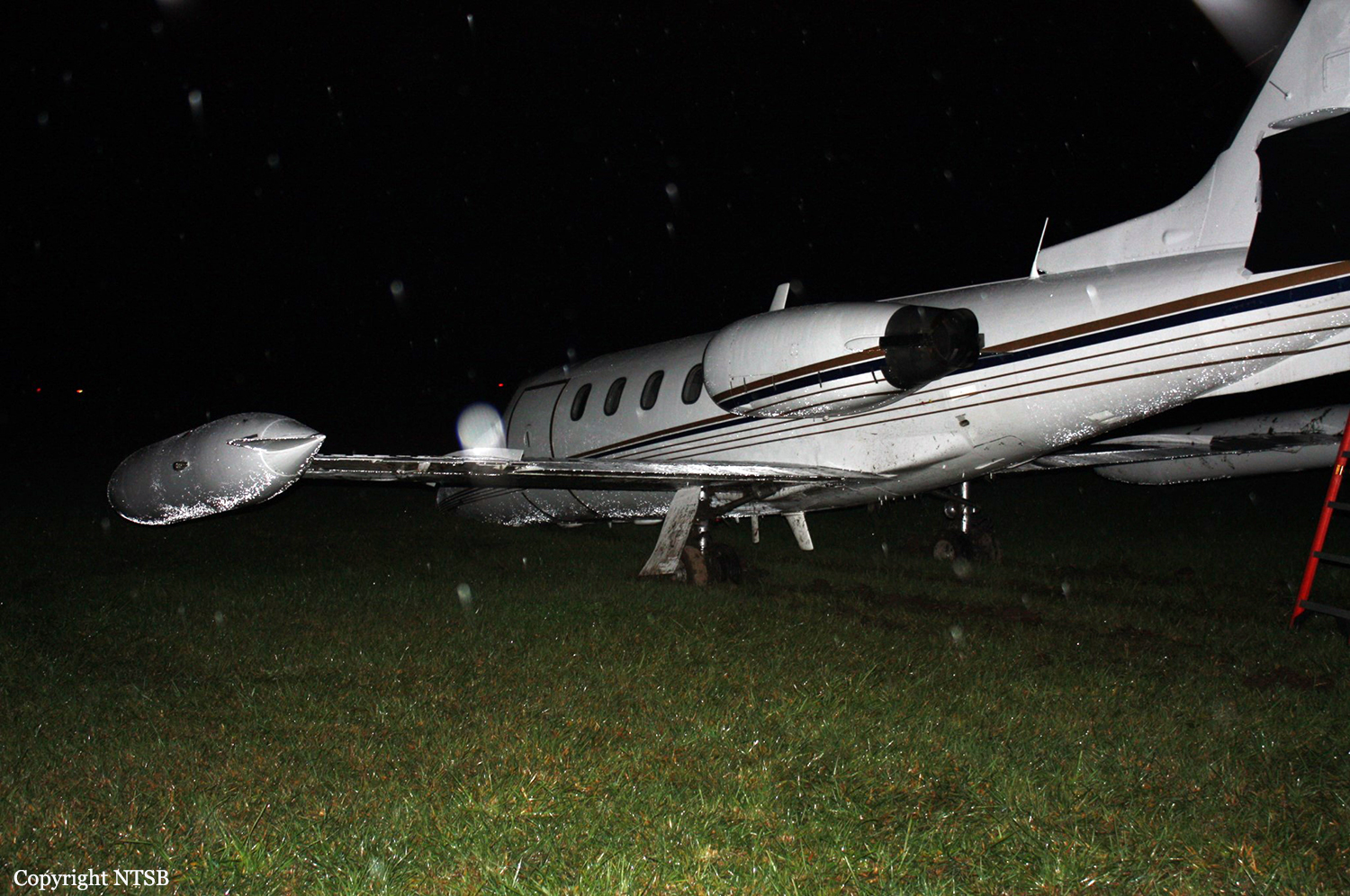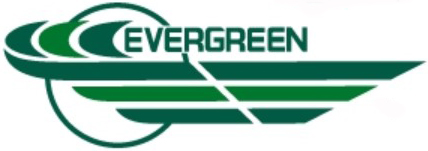Country
code
OR
Crash of a Learjet 35A in McMinville
Date & Time:
May 13, 2013 at 1245 LT
Registration:
N22MS
Survivors:
Yes
Schedule:
Grand Junction - McMinville
MSN:
209
YOM:
1978
Crew on board:
2
Crew fatalities:
Pax on board:
1
Pax fatalities:
Other fatalities:
Total fatalities:
0
Captain / Total hours on type:
996.00
Copilot / Total hours on type:
94
Aircraft flight hours:
15047
Circumstances:
The crew of the twinjet reported that the positioning flight after maintenance was uneventful. However, during the landing roll at their home base, the thrust reversers, steering, and braking systems did not respond. As the airplane approached the end of the runway, the pilot activated the emergency braking system; however, the airplane overran the end of the runway, coming to rest in a ditch. None of the three occupants were injured, but the airplane sustained substantial damage to both wings and the fuselage. Two squat switches provided redundancy within the airplane’s electrical system and were configured to prevent inadvertent activation of the thrust reversers and nosewheel steering during flight and to prevent the airplane from landing with the brakes already applied. Because postaccident examination revealed that the squat switch assemblies on the left and right landing gear struts were partially detached from their mounting pads such that both switches were deactivated, all of these systems were inoperative as the airplane landed. The switch assemblies were undamaged, and did not show evidence of being detached for a long period of time. The brakes and steering were working during taxi before departure, but this was most likely because either one or both of the switches were making partial contact at that time. Therefore, it was most likely that the squat switch assemblies were manipulated on purpose during maintenance in an effort to set the airplane’s systems to “air mode.” Examination of the maintenance records did not reveal any recent procedures that required setting the airplane to air mode, and all mechanics involved in the maintenance denied disabling the switches. Mechanics did, however, miss two opportunities to identify the anomaly, both during the return-to-service check and the predelivery aircraft and equipment status check. The anomaly was also missed by the airplane operator’s mechanic and flight crew who performed the preflight inspection. The airplane’s emergency braking system was independent of the squat switches and appeared to operate normally during a postaccident test. Prior to testing, it was noted that the emergency brake gauge indicated a full charge; therefore, although evidence suggests that the emergency brake handle was used, it was not activated with enough force by the pilot. The pilot later conceded this fact and further stated that he should have used the emergency braking system earlier during the landing roll. The airplane was equipped with a cockpit voice recorder (CVR), which captured the entire accident sequence. Analysis revealed that the airplane took just over 60 seconds to reach the runway end following touchdown, and, during that time, two attempts were made by the pilot to activate the thrust reversers. The pilot stated that as the airplane approached the runway end, the copilot made a third attempt to activate the thrust reversers, which increased the engine thrust, and thereby caused the airplane to accelerate. Audio captured on the CVR corroborated this statement.
Probable cause:
Failure of maintenance personnel to reattach the landing gear squat switches following maintenance, which rendered the airplane's steering, braking, and thrust reverser systems inoperative during landing. Contributing to the accident were the failure of both the maintenance facility mechanics and the airplane operator's mechanic and flight crew to identify the error during postmaintenance checks, a failure of the airplane's pilot to apply the emergency brakes in a timely manner, and the copilot's decision to attempt to engage the thrust reversers as the airplane approached the runway end despite multiple indications that they were inoperative and producing partial forward, rather than reverse, thrust.
Final Report:
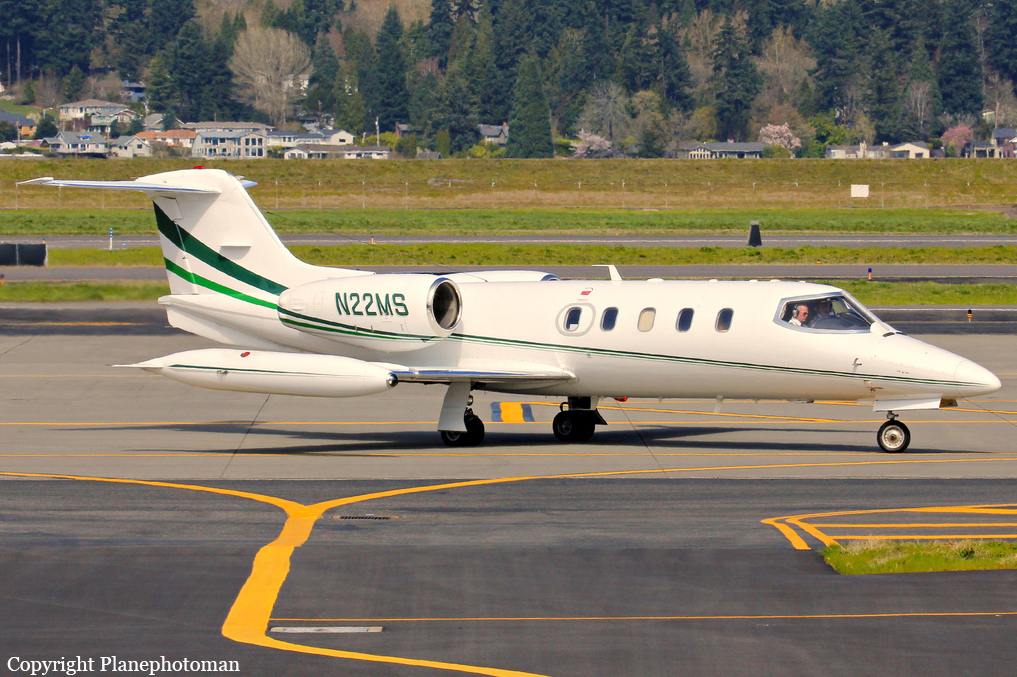
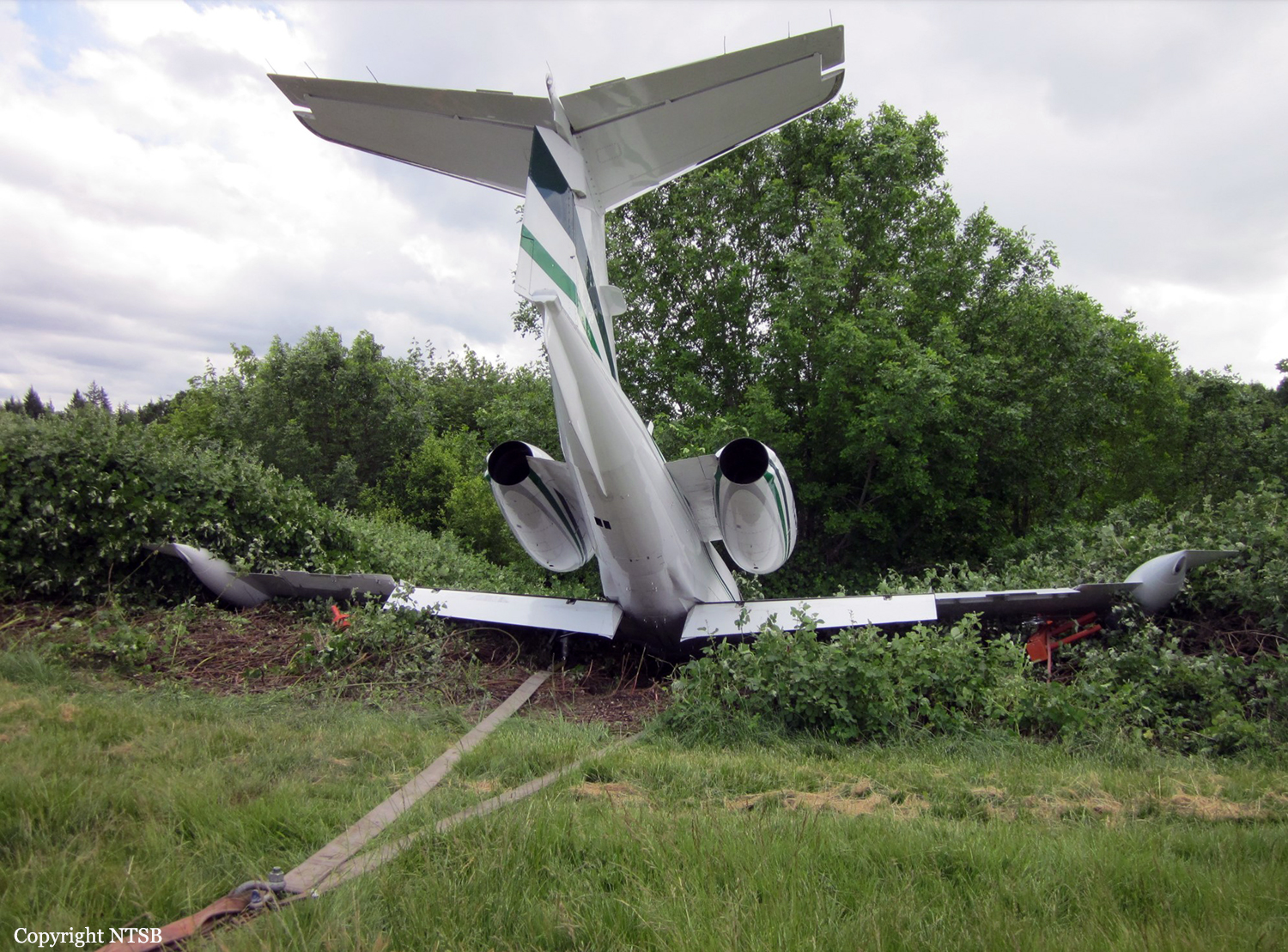
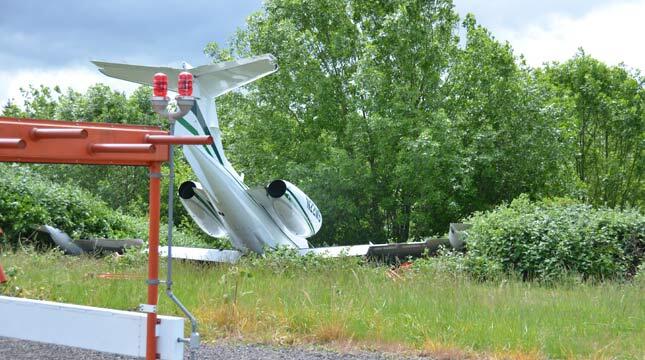
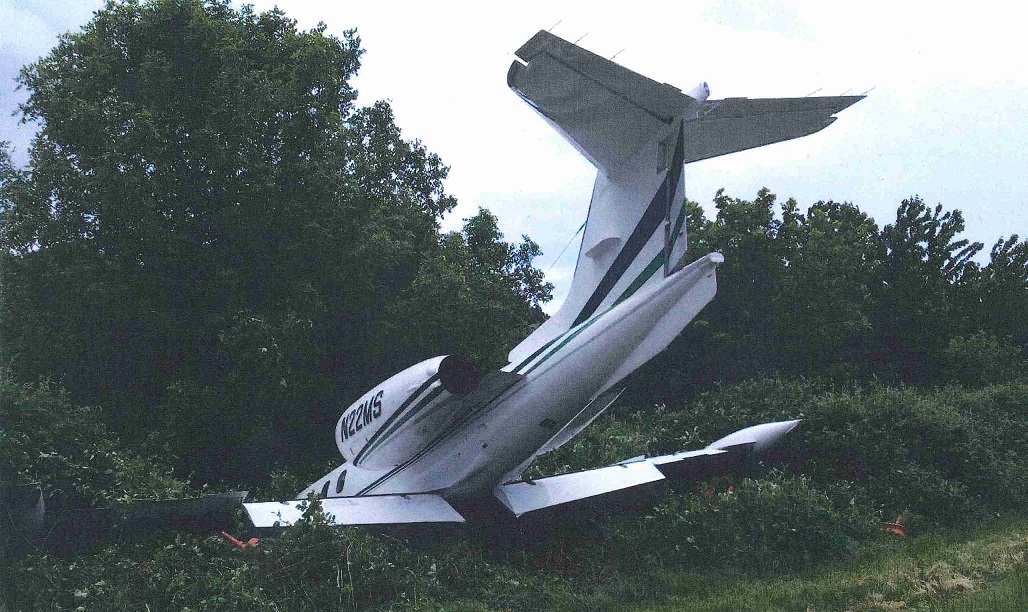
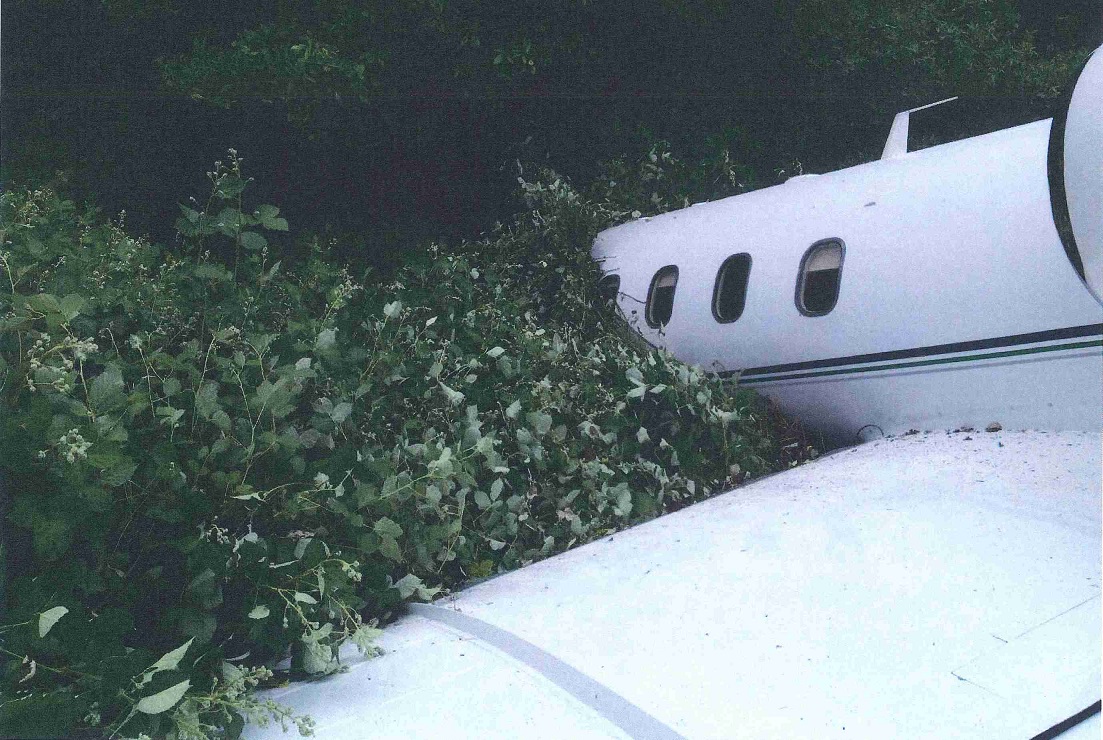
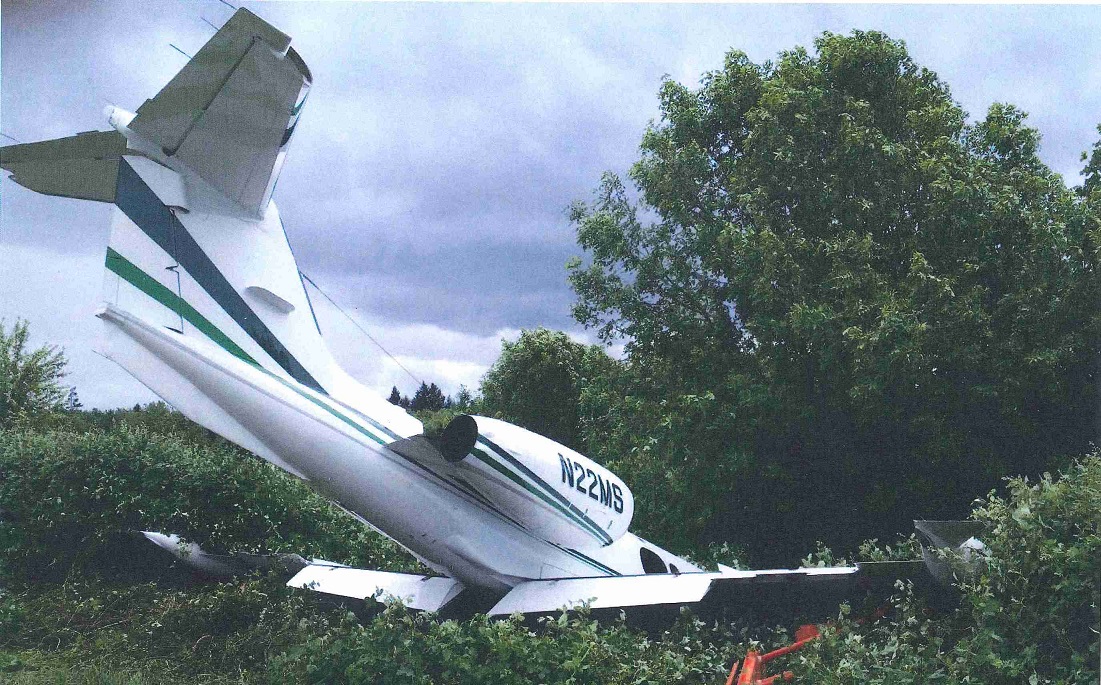
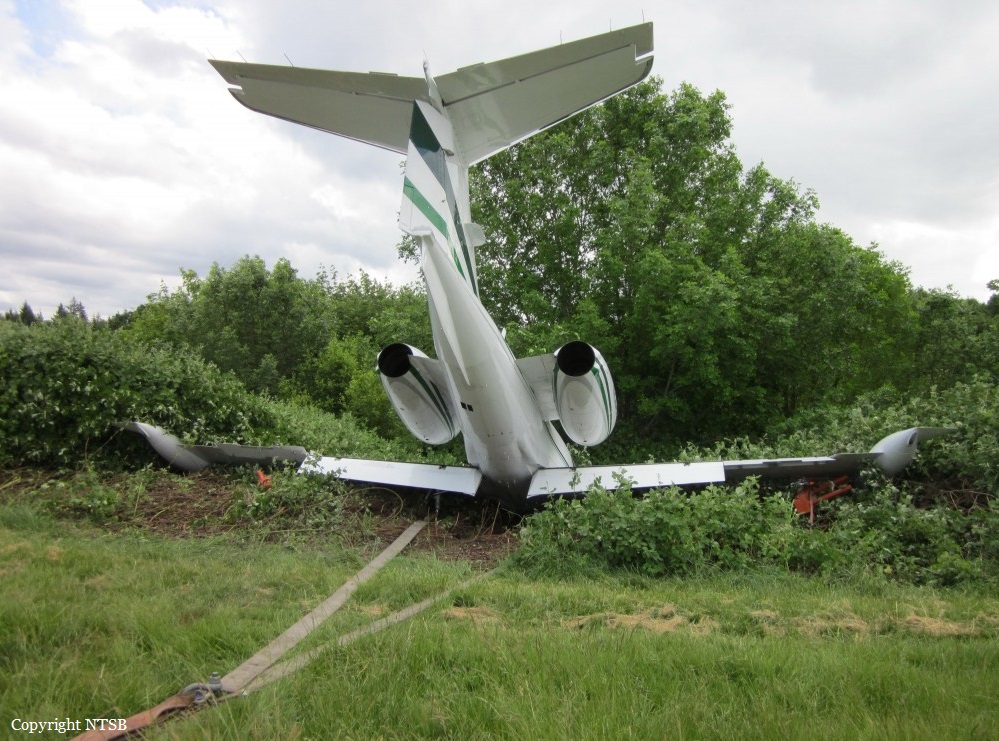
Crash of a Learjet 25B in Portland
Date & Time:
Nov 17, 2010 at 1553 LT
Registration:
N25PJ
Survivors:
Yes
Schedule:
Boise - Portland
MSN:
25-111
YOM:
1973
Crew on board:
2
Crew fatalities:
Pax on board:
0
Pax fatalities:
Other fatalities:
Total fatalities:
0
Copilot / Total hours on type:
10
Aircraft flight hours:
8453
Circumstances:
The airplane was flying a VOR/DME-C approach that was on an oblique course about 40 degrees to the runway 30 centerline; the wind conditions produced an 8-knot tailwind for landing on runway 30. Despite the tailwind, the captain elected to land on the 6,600-foot-long runway instead of circling to land with a headwind. Moderate to heavy rain had been falling for the past hour, and the runway was wet. The crew said that the airplane was flown at the prescribed airspeed (Vref) for its weight with the wing flaps fully extended on final approach, and that they touched down just beyond the touchdown zone. The captain said that he extended the wings' spoilers immediately after touchdown. He tested the brakes and noted normal brake pedal pressure. However, during rollout, he noted a lack of deceleration and applied more brake pressure, with no discernible deceleration. The airplane's optional thrust reversers had been previously rendered non-operational by company maintenance personnel and were therefore not functional. The captain stated that he thought about performing a go-around but believed that insufficient runway remained to ensure a safe takeoff. While trying to stop, he did not activate the emergency brakes (which would have bypassed the anti-skid system) because he thought that there was insufficient time, and he was preoccupied with maintaining control of the airplane. He asked the first officer to apply braking with him, and together the crew continued applying brake pedal pressure; however, when the airplane was about 2,000 feet from the runway's end, it was still traveling about 100 knots. As the airplane rolled off the departure end on runway 30, which was wet, both pilots estimated that the airplane was still travelling between 85 and 90 knots. The airplane traveled 618 feet through a rain-soaked grassy runway safety area before encountering a drainage swale that collapsed the nose gear. As the airplane was traversing the soft, wet field, its wheels partially sank into the ground. While decelerating, soil impacted the landing gear wheels and struts where wiring to the antiskid brake system was located. The crew said that there were no indications on any cockpit annunciator light of a system failure or malfunction; however, after the airplane came to a stop they observed that the annunciator light associated with the antiskid system for the No. 2 wheel was illuminated (indicating a system failure). The other three annunciator lights (one for each wheel) were not illuminated. During the approach, the first officer had completed the landing data card by using a company-developed quick reference card. The quick reference card’s chart, which contained some data consistent with the landing charts in the Airplane Flight Manual (AFM), did not have correction factors for tailwind conditions, whereas the charts in the AFM do contain corrective factors for tailwind conditions. The landing data prepared by the first officer indicated that 3,240 feet was required to stop the airplane on a dry runway in zero wind conditions, with a wet correction factor increasing stopping distance to 4,538 feet. The Vref speed was listed as 127 knots for their landing weight of 11,000 pounds, and the first officer’s verbal and written statements noted that they crossed the runway threshold at 125 knots. During the investigation, Bombardier Lear calculated the wet stopping distances with an 8-knot tailwind as 5,110 feet. The touchdown zone for runway 30 is 1,000 feet from the approach end. The crew’s estimate of their touchdown location on the runway is about 1,200 feet from the approach end, yielding a remaining runway of 5,400 feet. On-duty controllers in the tower watched the landing and said that the airplane touched down in front of the tower at a taxiway intersection that is 1,881 feet from the approach end, which would leave about 4,520 feet of runway to stop the airplane. The controllers observed water spraying off the airplane’s main landing gear just after touchdown. Post accident testing indicated that the brake system, including the brake wear, was within limits, with no anomalies found. No evidence of tire failure was noted. The antiskid system was removed from the airplane for functional tests. The control box and the left and right control valves tested within specifications. The four wheel speed sensors met the electrical resistance specification. For units 1, 2 and 3, the output voltages exceeded the minimum specified voltages for each of the listed frequencies. Unit 4 was frozen and could not be rotated and thus could not be tested. Sensors 1 and 2 exceeded the specified 15% maximum to minimum voltage variation limit. Sensor 3 was within the limit and 4 could not be tested. Based on all the evidence, it is likely that the airplane touched down on the water-contaminated runway beyond the touchdown zone, at a point with about 600 feet less remaining runway than the performance charts indicated that the airplane required for the wet conditions. Since a reverted rubber hydroplaning condition typically follows an encounter with dynamic hydroplaning, the reverted rubber signatures on the No. 2 tire indicate that the airplane encountered dynamic hydroplaning shortly after touchdown, and the left main gear wheel speed sensor anomalies allowed the left tires to progress to reverted rubber hydroplaning. This, along with postaccident testing, indicates that the anti-skid system was not performing optimally and, in concert with the hydroplaning conditions, significantly contributed to the lack of deceleration during the braking attempts.
Probable cause:
The failure of the flight crew to stop the airplane on the runway due to the flying pilot’s failure to attain the proper touchdown point. Contributing to the accident was an anti-skid system that was not performing optimally, which allowed the airplane to encounter reverted rubber hydroplaning, and the company-developed quick reference landing distance chart that did not provide correction factors related to tailwind conditions.
Final Report:
